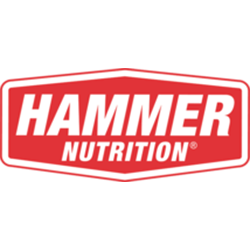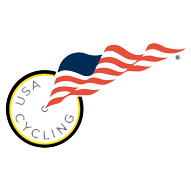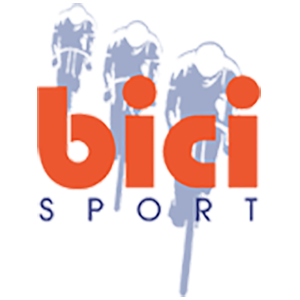You may have heard your riding buddies mumbling something about replacing glycogen stores while stuffing their face with a “personal” sized pizza post ride. So what is glycogen and why is it important? Here I will give a brief introduction on the topic.
First, it’s important to understand the relationship between carbohydrates, glucose and glycogen:
Carbohydrates
Carbohydrates can also be referred to as saccharides and are a group of organic molecules that includes sugars, starches and cellulose (1). They can be made up of multiple saccharide molecules linked together (polysaccharides), two saccharide molecules (disaccharides) or a single saccharide molecule (monosaccharide).
Glucose
Monosaccharides and disaccharides can also be referred to as sugars. Glucose (blood sugar) is an important monosaccharide that provides energy for muscle contractions (1). Glucose is stored as a specific polysaccharide in our bodies called glycogen.
Glycogen
Many molecules of Glucose are chained together to form glycogen, which is stored in our muscles and liver (1). Glycogen is broken down into individual glucose molecules in muscle cells when needed for energy production.
Glycogen is essentially stored carbohydrate, and as we know carbohydrate as a substrate for endurance exercise is very important. Glycogen is mainly stored in our muscle fibers and liver (1) and is readily available for use during exercise.
A few landmark early studies have set the stage for why glycogen is so important. These studies showed that:
Muscle glycogen was systematically depleted during heavy (77% V02 max) exercise (2).
Glycogen content was near zero at time of exhaustion (2).
Work time to exhaustion was directly related to starting glycogen stores in muscles used (3).
These results have been backed up and confirmed by many related studies (4,11,12). It is clear that glycogen is important, and the amount of glycogen that you have is also important.
A normal, healthy 70kg male eating a high carbohydrate diet might have around 600g (2,400 calories) of carbohydrate stored as glycogen in their muscles, plus another 90g in the liver (5,6,7). Compare this to about 10g of carbohydrate in the blood stream (5,6,7), and you can quickly see why glycogen is vital as a source of carbohydrate during exercise.
Glycogen before exercise
A high carbohydrate diet is key to maintaining and maximizing glycogen stores (5,6,7). This is pretty straightforward, in order to store carbohydrates, you need to first eat carbohydrates.
There are some slightly more complex strategies to maximizing your glycogen stores such as carbo-loading or carbohydrate periodization that involve altering your carbohydrate intake in specific ways, but a more simple strategy will be easier to follow.
The simplest strategy is to maintain a high carbohydrate diet that reflects the energy requirements of your training or racing. The blog posts, Are you Fueling Enough on the Bike? and 3 Strategies to get Lean and Stay Lean have more specific dietary recommendations.
Glycogen during exercise
Once you start riding or racing, you will be using up your glycogen stores, especially during the first hour of exercise, and during higher intensity efforts (1). You will not be replacing glycogen stores as you ride, but rather you will increasingly rely on blood glucose and free fatty acids in the later stages of a longer ride or race (10).
Again, see Are you Fueling Enough on the Bike? for detailed nutritional recommendations, but understand that once you have started exercising, the glycogen you started with is all you have to work with, additional carbohydrate needs will need to be met with on the bike nutrition.
Glycogen after exercise
Replacing glycogen stores should be one of your main concerns immediately post ride or race:
Chronic depletion of glycogen has been shown to be detrimental to performance during heavy training (9).
The rate of glycogen replacement is highest immediately following exercise upon ingesting a high carbohydrate meal (8).
Glycogen levels should return to normal levels in about 24 hours if you eat a carbohydrate rich meal post ride, and continue to ingest high levels of carbohydrates in your other meals (8).
In order to ensure that your glycogen stores return to normal levels for your next workout, eat a high carbohydrate meal immediately post exercise, and continue to eat carbohydrates as a part of your normal meals.
Summary
Glycogen is stored carbohydrate, and is mainly present in our muscles (1,5,6,7).
Performance in endurance events is impacted by starting glycogen levels (2,3,5,6,7,11).
Glycogen is a limited resource once exercise has begun (5,6,7).
Replacing glycogen stores post exercise is essential for maintaining performance during day to day training and racing (9, 11).
Glycogen is most quickly replaced immediately post exercise (8).
It takes about 24 hours to completely replenish glycogen levels, assuming ingestion of a high carbohydrate meal post exercise, and a consistently high carbohydrate diet (1,8,12)
Exercise nutrition is a very complex topic, but having a basic understanding of what your body needs in order to perform is an essential tool if you are serious about improving on the bike, or in any athletic endeavor.
References
1. Powers, S.K. and Howley, E.T. (2012) Exercise physiology: Theory and application to fitness and performance. 8th edn. New York: McGraw-Hill Humanities/Social Sciences/Languages. (Powers and Howley, 2012, pp. 68–90) (Powers and Howley, 2012, pp. 443–457) (Powers and Howley, 2012, pp. 519–540)
2. Hermansen L, Hultman E, and Saltin B. Muscle glycogen during prolonged severe exercise. Acta Physiol Scand 71: 129-139, 1967
3. Ahlborg B. Muscle glycogen and muscle electrolytes during prolonged phusical exercise. Acta Physiologica Scandinavia 70: 129-142, 1967
4. Bergstrom J, HermansenL, Haultman E, and Saltin B. Diet, muscle glycogen and physical performance. Acta Physiol Scand 71: 140-150, 1967
5. Davis JA, Vodak P, Wilmore JH, Vodak J, and Kurtz P. Anaerobic threshold and maximal aerobic power for three modes of exercise. J Appl Physiol 41: 544-550, 1967
6. Dodd S, Powers S, O’Malley N, Brooks E and Sommers H. Effects of beta-adrenergic blockade on ventilation and gas exchange during incremental exercise. Aviat Space Environ Med 59: 718-722, 1988
7. Holloszy JO. Muschle metabolism during exercise. Arch Phys Med Rehabil 63: 231-234, 1982
8. Ivy, J.L., Katz, A.L., Cutler, C.L., Sherman, W.M. and Coyle, E.F. (1988) ‘Muscle glycogen synthesis after exercise: Effect of time of carbohydrate ingestion’, Article, 64(4), pp. 1480–1485.
9. Costill, D., Flynn, M., Kirwan, J., Houmard, J., Mitchell, J., Thomas, R. and Park, S. (1988) ‘Effects of repeated days of intensified training on muscle glycogen and swimming performance’, Medicine and science in sports and exercise., 20(3), pp. 249–54. (Costill et al., 1988)
10. Holloszy J. Utilization of fatty acids during exercise. In: Biochemistry of Exercise VII, edited by Taylor A. Champaign: Human Kinetics, 1990, p. 319-328
11. Karlsson J, and Saltin B. Diet, muscle glycogen, and endurance performance. Journal of Applied Physiology 31: 203-206, 2010
12. CONLEE, R.K. (1987) ‘1 muscle Glycogen and exercise endurance: A Twenty-Year Perspective…: Exercise and sport sciences reviews’, American College of Sports Medicine, Volume 15,(1), pp. 1–28.














